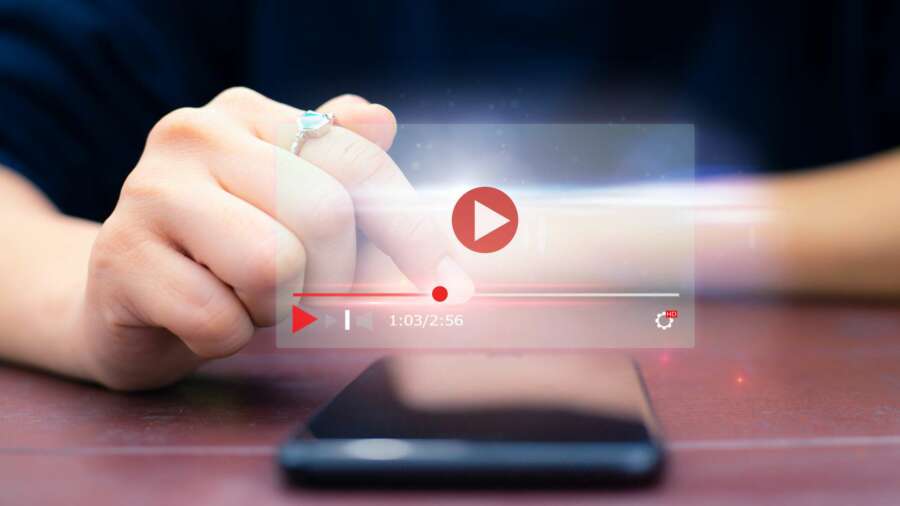
Author: Dan Vetras, CEO, Kollective Technology
In 2019, businesses spent $31.6 billion on international travel – and it wasn’t just for the airline miles. For every dollar spent on business travel, organizations averaged an $9.50 increase in revenue.
Why is travel so effective for generating revenue? It all comes down to face-to-face communication. Whether you’re meeting with a prospect or spending time with a remote team, in-person communication is best for sharing important messages.
In today’s world, we have learned that being together in person isn’t always possible. Live video is the next best thing. It offers many of the same attributes. Video can persuade, inform, train, engage, excite, connect and demonstrate leadership. Whether energizing the culture of your organization or navigating challenging conversations, live video lets you leverage emotion and bond with your audience.
Why People Trust Live Video
According to a recent article published by Fast Company live video is important because, “People can see your nonverbal behaviors and get a sense of your mood, your manner, and your mindset. These factors all help to communicate a sense of openness. This, in turn, tends to encourage others to share, building a positive reinforcing loop.”
Put simply, video builds inclusivity – something that should not be taken lightly given the highly distributed business environment we are operating in today.
How to Use Video to Build Confidence with Your Audience
Enterprise video isn’t as simple as sending out an invitation and starting to talk. It takes strategy, leadership, buy-in, and a reliable technology solution to deliver your content at scale. Here are five tips for presenters on how to use video to build confidence with your audience.
Tip 1: Know Your Audience
Whether speaking to investors, customers or employees, knowing your audience is hugely
important when preparing a speech. Even if not speaking face-to-face, understanding
what and how your audience wants to hear a message will help keep them engaged. In
challenging times of mass remote working, this can also help virtual offices and team catch
ups feel more inclusive and normal.
Tip 2: Own the Agenda
Delivering messages effectively to a group requires a planned agenda. For example, with live
broadcasts involving multiple speakers, it’s important to decide who speaks when, for how
long, and in what format.
Additionally, good content flow between speakers reinforces the critical messages being
shared and keeps audiences engaged. If someone will be speaking before or after you, it’s
important totie their sessions into your overall message.
Tip 3: Be the Talent
While most business leaders won’t require a green room or have any diva-like demands, it’s
important for presenters to prepare for and deliver in the way that works best for them. Whether
that’s choosing to stand, preferring a certain type of microphone or being in control of the slides
with a clicker, it is vital for your presenter to be the talent.
Many companies will have in-house events teams and it’s important to take advantage of their
expertise. If you don’t have an in house events team, learn how an Enterprise Video Strategy Team can help.
Tip 4: Commit to Getting Better
Being a strong on-camera communicator is an essential part of the modern executive’s job. Still,
no matter how many times you do it, there is always room for improvement. One way to achieve
that is asking for real-time feedback and taking it to heart. And don’t forget to rewatch your recorded on-demand meeting and notice your body language. Are you slouching? Folding your arms? Looking away from the camera? Confidence flows from good posture, so work out a way that feels comfortable and not staged.
Also study your language patterns and how you connect with both the people in the room and
those joining virtually. Making sure everyone feels included can be the difference between an
audience that’s engaged vs. distracted and bored.
Tip 5: Put in the Work
As a leader, it’s vital your audience trusts you. Slides should be used as a visual cue only, as
communicating with your team is about speaking from the heart, not from bullet points or a script.
If going ‘unscripted’ feels too stressful, it’s important to remember that anxiety is
completely normal and even professional public speakers feel stress before going on stage.
To overcome this, speakers should channel nervous energy into excitement and keep in mind
passion, not confidence, is what we remember about a speaker.
Video is the Future of Work
Today’s younger, more tech-savvy workforce is fueled by a culture of video communications and entertainment across platforms like Netflix, YouTube and TikTok. Simultaneously, video has become the preferred way for collaboration, communication and learning in the workplace. Make sure each time you appear on camera, you put your best foot forward to deliver the best, most inclusive experience.


